REAL OR FAKE DIAMOND?
HOW TO TELL IF A DIAMOND IS REAL OR FAKE!
This post contains affiliate links. If you use these links to buy something I may earn a commission. Thanks! As an Amazon Associate I also earn from qualifying purchases.
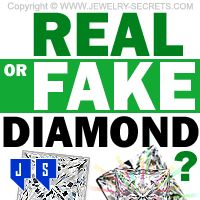
I get emails all the time about people asking whether a stone is a real diamond or not.
And yes, it’s pretty impossible to tell from an email. :)
Most jewelers can look at a stone, and for the most part quickly discern if it’s fake or not. They will still double check their findings with a diamond tester (which also tests for the man-made stone moissanite), but that doesn’t help you much when you write in inquiring.
So either you drive yourself to a local jewelry store.
Or, there are some simple ways to tell if your stone is diamond, or something else.
Let’s take a peek.
Here’s how to tell if a diamond is fake or real:
- Breath on the Stone
- Look for Inclusions
- Look for Rainbows
- Read a Newspaper
- Touch the Stone
- Check the Mounting
Now let’s dive in…
1) Breath on the Stone
Seriously!
Breath on the stone and see how fast the steam clears. If it dissipates almost instantly, it’s probably real.
Fake stones will stay foggy for a much longer time.
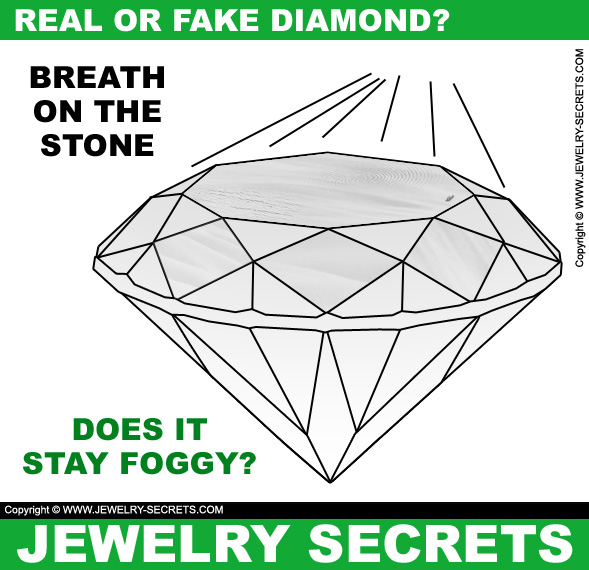
2) Look for Inclusions
Grab yourself a 10x jeweler’s loupe (unless you’ve got bionic eyes), and view the stone at 10x magnification.
Do you see inclusions or flaws in the stone?
Things like: Lines, cloudy areas, black spots, cracks, or pin-points?
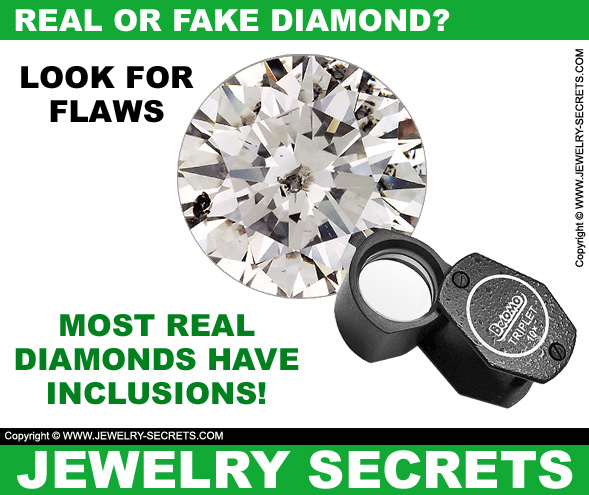
If so, it’s probably real.
Real diamonds (99% of them) have flaws, and most of these, have flaws big enough to see with the bare eye (no loupe needed).
So if you see imperfections, it’s probably safe to say it’s the real deal.
Fake stones are generally made in a laboratory and will be “flawless” (like a cubic zirconia).
Plus, almost all fake stones are pure white too! White-white, like bleach-white.
If the body color of the stone is blanched, it’s probably fake.
3) Look for Rainbows
Diamonds, if cut well, will have a good mixture of both brilliance (white flashes of light), and fire (colored flashes of light).
This “fire“, which is also called “dispersion“, happens when light is bent at an angle (Which happens when light enters the stone and bounces across the pavilion – base of the diamond).
And it’s a pretty wonderful sight.
But there is one stone that exhibits even more rainbow colors.
In fact, a lot more.
CZ’s (cubic zirconia), are one of the few stones (and which are extremely popular as a cheap diamond knock-off) that have a higher density than a diamond (about 1.7 times more). Hence, it shows off MORE color than a diamond does.
So if a stone looks really colorful, it’s probably fake.
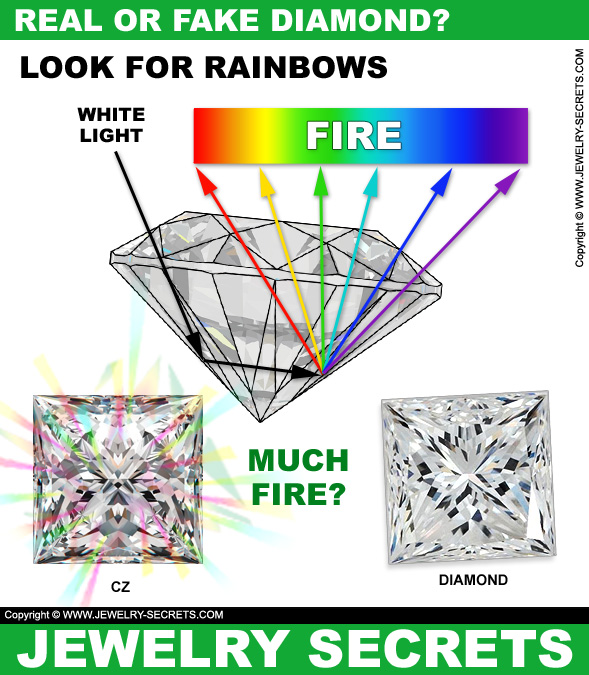
4) Read a Newspaper
Place the stone in question face down on a newspaper or magazine.
Now, look through the pavilion and see if you can read the text clearly.
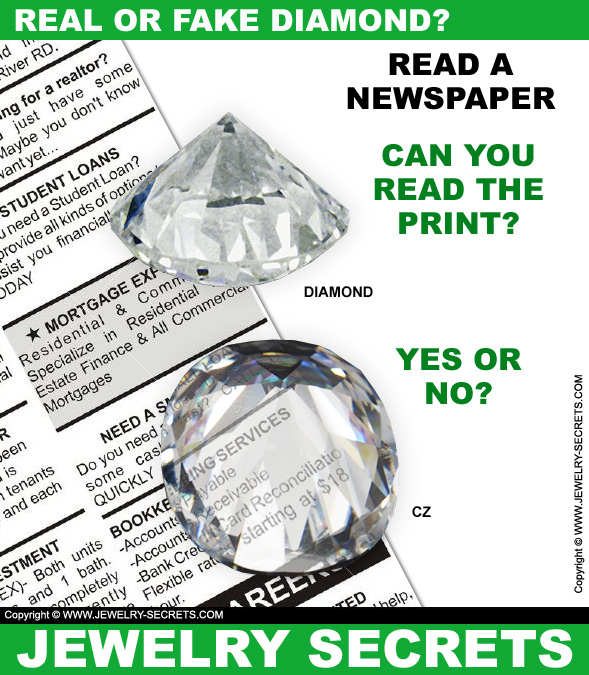
If you are able to read the fine print through the facets, chances are, the stone’s not real.
Fake stones are more glassy and transparent and the print will be easier to see and read.
Diamonds are much harder to see through.
5) Touch the Stone
Place your finger on top of the stone.
Does it feel warm to the touch?
Diamonds have a very high thermal conductivity (which is what a diamond tester tests for). This means they feel warm.
Other stones that are fake, don’t have this lovely attribute, and they’ll feel cool, or cold.
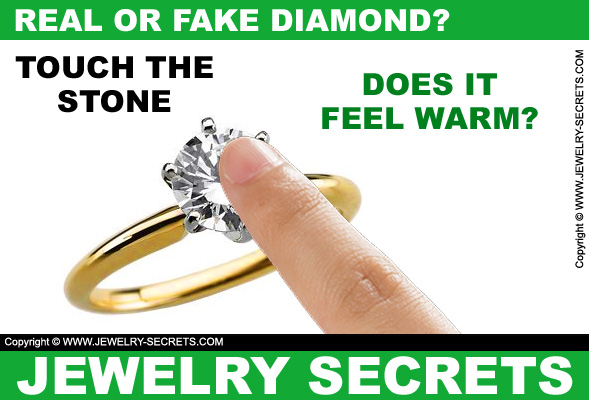
6) Check the Mounting
Most synthetic look-a-likes will NOT be set into precious metals like gold or platinum. If the stones are cheap, it’ll usually get a cheap mounting as well.
So look to see what type of metal it is. If it’s 10k (.417), 14k (.585), 18k (.750), or Platinum (PLAT).
(See more Stamps Inside Rings here.)
Most fakes will be set in plated mountings (base metal, which also feels very light-weight), silver, gold filled or gold plated.
Cheap Stones, Cheap Mountings.
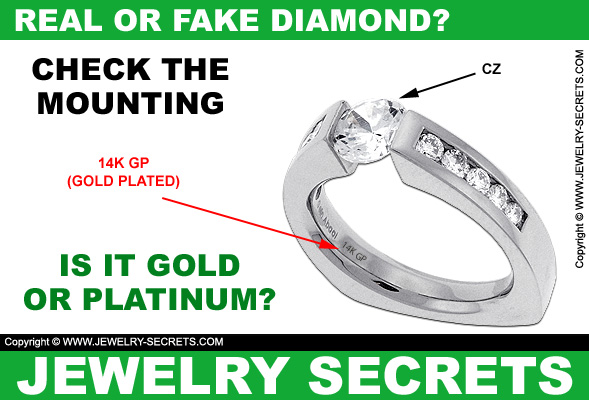
And lastly, the easiest way to tell if a diamond is fake or not:
The price
If a ring is selling for $79.00 (like this huge ring here), versus $5,499.00 like this real diamond ring here, then don’t even ask…
IT’S FAKE!
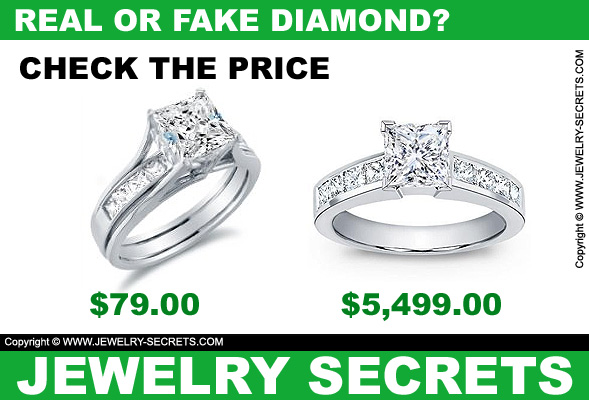
Hope this helps
P.S. CZ’s will also dull up, show scratches, and the edges will round off in time.
Now you know.
CHEERS! :)




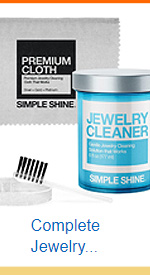
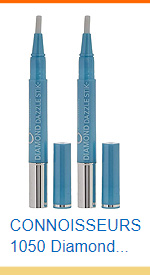
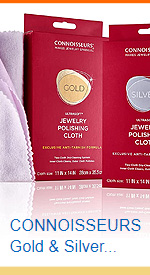
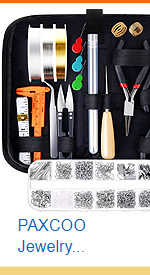
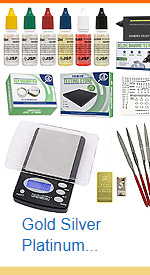
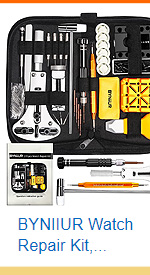
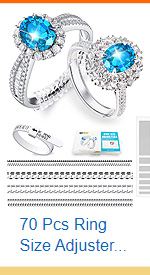
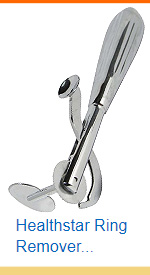
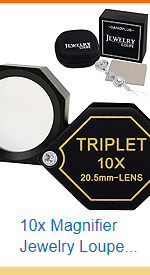
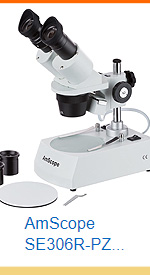




I have but m still not clear whether it is cz or diamond…Bhutan
What if the setting is marked “825” with an infinity symbol?
I was told that the 825 was used for 18k gold, so I just wanted to know.